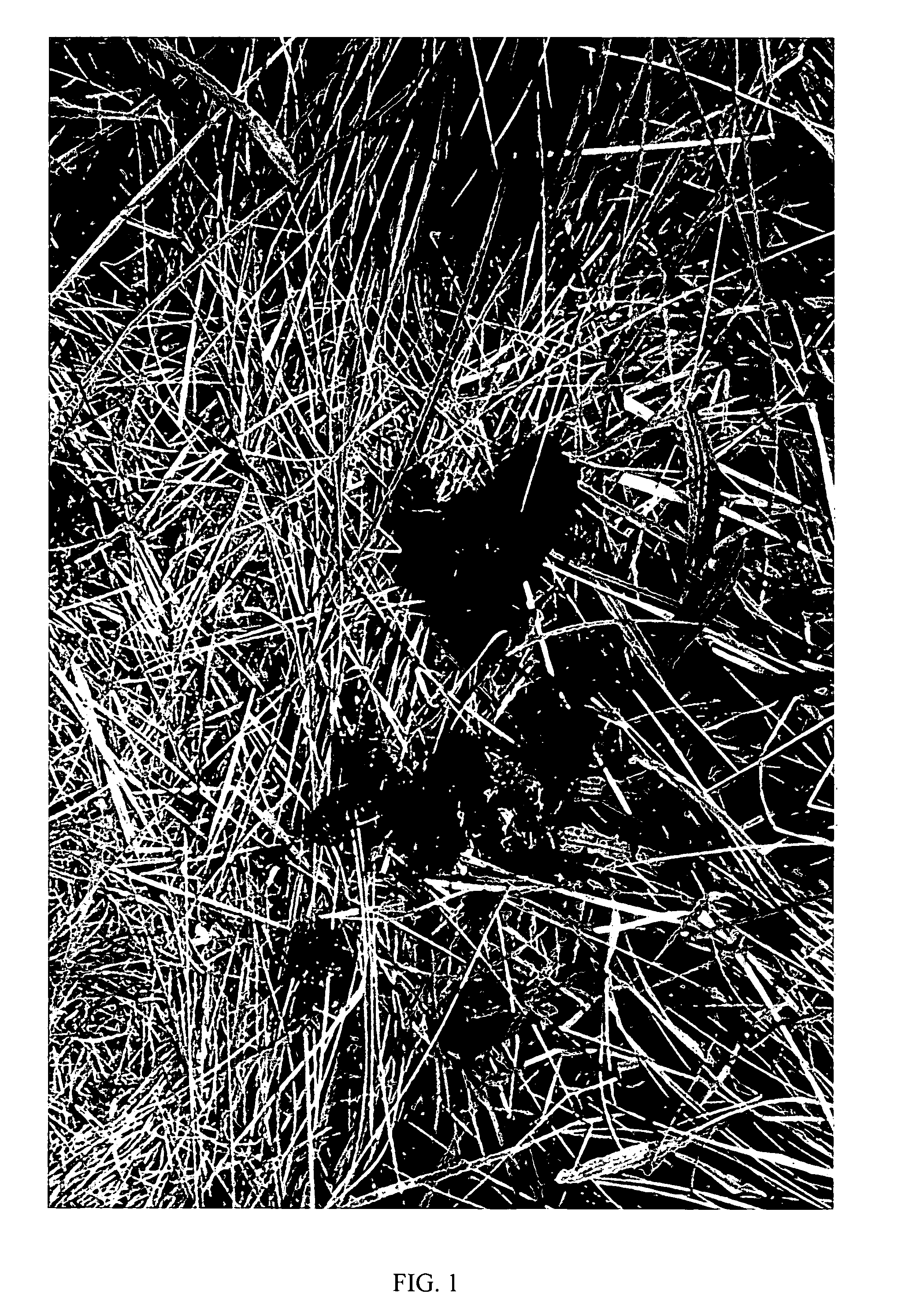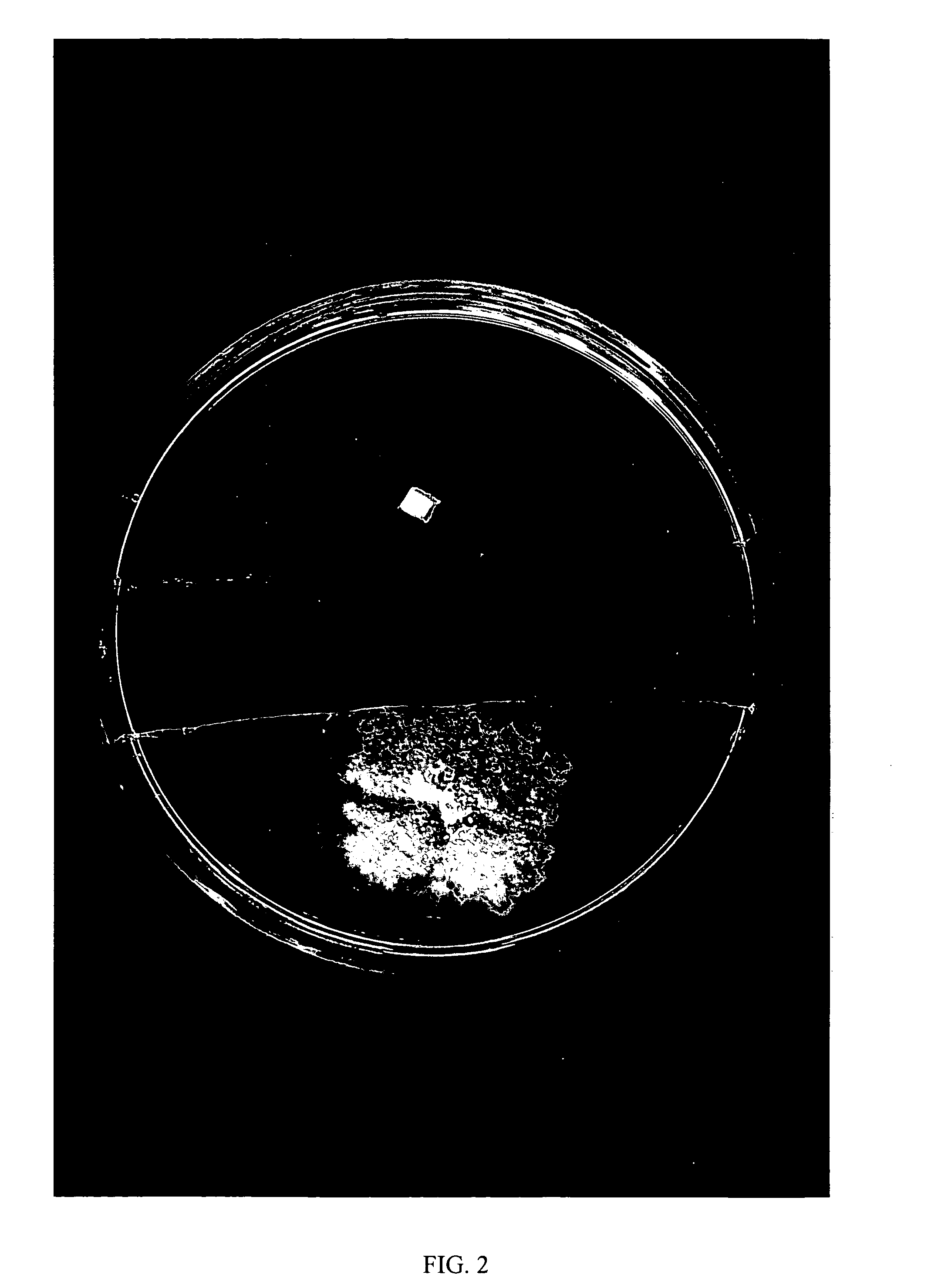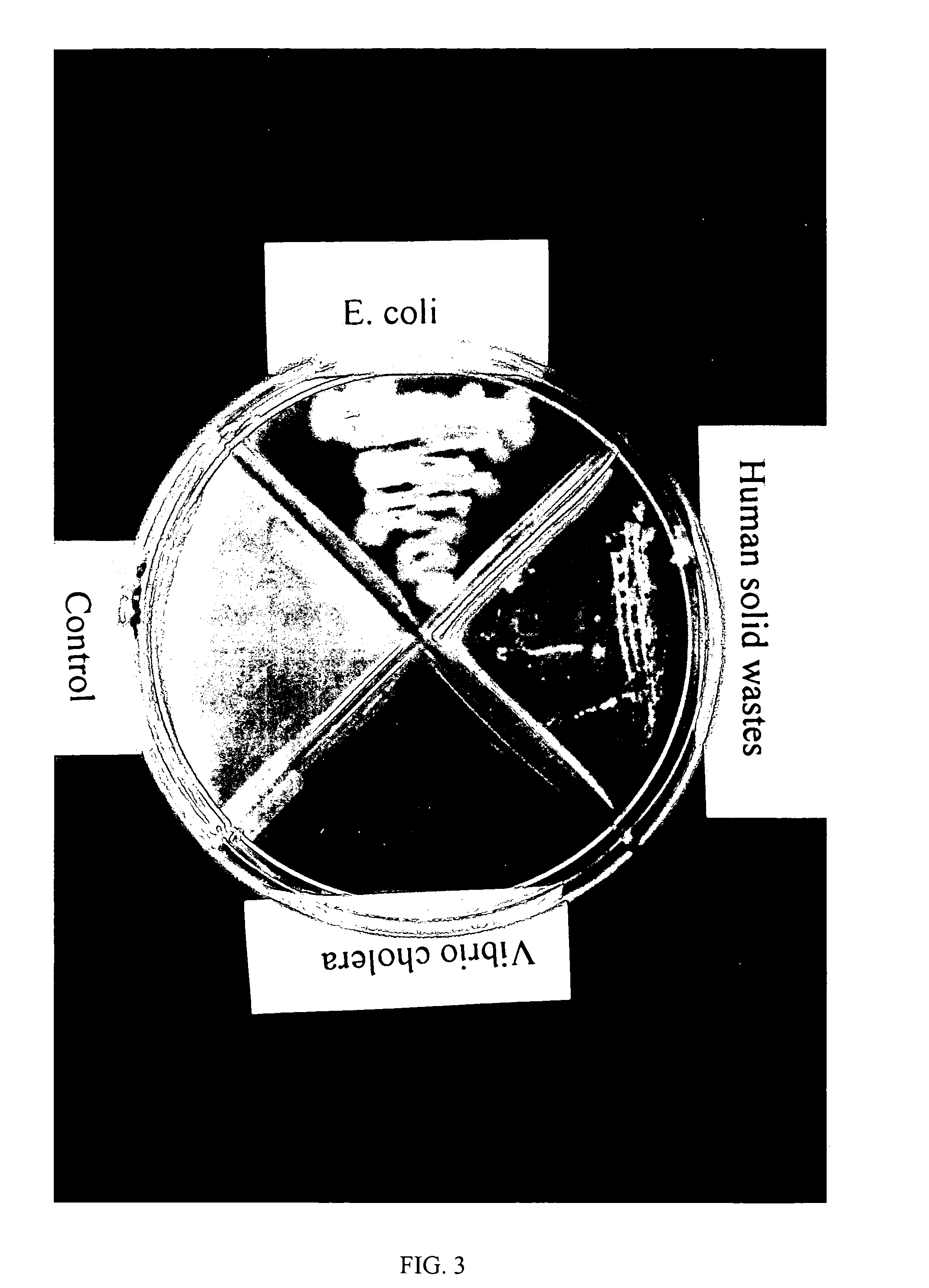Application of volatile antibiotics and non-volatile inhibitors from Muscodor spp. to control harmful microbes in human and animal wastes
a technology of volatile antibiotics and inhibitors, which is applied in the direction of biocide, microorganisms, biochemistry apparatus and processes, etc., can solve the problems of both environmental and health hazards
- Summary
- Abstract
- Description
- Claims
- Application Information
AI Technical Summary
Benefits of technology
Problems solved by technology
Method used
Image
Examples
example 1
A. EXAMPLE 1
Analysis of the Volatiles of M. albus
[0026]A method was devised to analyze the gases in the air space above the M. albus mycelium growing in Petri plates. First, a “Solid Phase Micro Extraction” syringe was shown to be a convenient method for trapping the fungal volatiles. The fiber material (Supelco) was 50 / 30 divinylbenzene / carburen on polydimethylsiloxane on a stable flex fiber. The syringe was placed through a small hole drilled in the side of the Petri plate and exposed to the vapor phase for 45 minutes. The syringe was then inserted into a gas chromatograph (Hewlett Packard 5890 Series II Plus) equipped with a mass-selective detector. A 30 m×0.25 mm I.D. ZB Wax capillary column with a film thickness of 0.50 mm was used for the separation of the volatiles. The column was temperature programmed as follows: 25° C. for 2 minutes followed to 220° C. at 5° C. / minute. The carrier gas was Helium Ultra High Purity (local distributor), and the initial column head pressure w...
example 2
B. EXAMPLE 2
Bioassay of M. albus Against Human Pathogens
[0029]A relatively simple bioassay test system was devised that allows only for volatiles being the causative agents for any microbial inhibition. Initially, on a Petri plate with PDA, an agar strip 2.5 cm wide was completely removed from the mid-portion of it (FIG. 2). Then, M. albus was inoculated and grown on one side of the plate for varying time periods prior to testing. The test fungus or bacterium was placed onto the agar half moon strip on the opposite side of the plate. Individual fungi were inoculated on the test side of the plate on a 3 mm3 plug of agar. Bacteria and Candida albicans were simply streaked (1.5 cm long) onto the PDA on the test side of the plate. The act of removing a strip of agar from the mid-portion of the plate effectively precluded the diffusion of any inhibitory soluble compounds emanating from M. albus to the fungi or bacteria being tested (FIG. 2). The plate was wrapped with two individual piec...
example 3
C. EXAMPLE 3
Direct Petri Plate Inhibition Assays
[0031]While the quadrant plate technique unequivocally demonstrated that volatiles diffusing from M. albus were inhibitory to microbes found in human wastes such as E. coli and Vibrio cholerea, evidence of other inhibitory compounds in M. albus was sought. To this end, ten-day-old cultures of M. albus on half plates, with and without the center strip removed (known as a split plate), were incubated with streaks of human solid wastes for seven days. Appropriate controls, without M. albus, were also run simultaneously. The results showed that virtually no bacterial growth occurred on the plate with M. albus, the human wastes, and no removal of the agar strip. Likewise, some inhibition occurred on the plate with M. albus, human wastes, and the agar strip removed, which suggests that the volatiles of M. albus were affecting bacterial growth but not as extensively as when direct contact of the wastes and the fungal culture existed. As expec...
PUM
| Property | Measurement | Unit |
|---|---|---|
| thickness | aaaaa | aaaaa |
| thickness | aaaaa | aaaaa |
| temperature | aaaaa | aaaaa |
Abstract
Description
Claims
Application Information
 Login to View More
Login to View More - R&D
- Intellectual Property
- Life Sciences
- Materials
- Tech Scout
- Unparalleled Data Quality
- Higher Quality Content
- 60% Fewer Hallucinations
Browse by: Latest US Patents, China's latest patents, Technical Efficacy Thesaurus, Application Domain, Technology Topic, Popular Technical Reports.
© 2025 PatSnap. All rights reserved.Legal|Privacy policy|Modern Slavery Act Transparency Statement|Sitemap|About US| Contact US: help@patsnap.com



